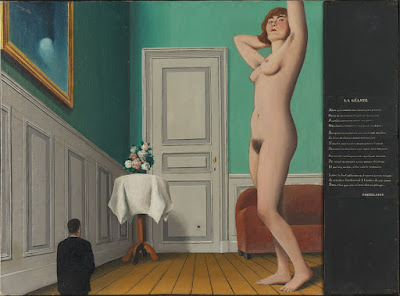-National-Gallery-of-Art-Washington-DC.jpg) |
| Master of Saint Veronica The Crucifixion ca. 1400-1410 tempera on panel National Gallery of Art, Washington DC |
 |
| attributed to Joan Rosato Mystical Crucifixion (Four Doctors of the Church and St Paul contemplating the Crucifixion) 1445 tempera on panel Princeton University Art Museum |
 |
| workshop of Konrad Witz God the Father sending Christ into the World ca. 1445 tempera on panel Gemäldegalerie, Staatliche Museen zu Berlin |
 |
| Agostino Mitelli Design for Ceiling Quadratura ca. 1650 drawing Musée des Beaux-Arts de Lyon |
-Dordrechts-Museum.jpg) |
| Abraham Bisschop The Raven robbed of its Borrowed Feathers 1708 oil on canvas (trompe-l'oeil ceiling painting) Dordrechts Museum |
 |
| Daniel Marot Design for Ceiling with Commedia dell'Arte Figures ca. 1710 drawing National Gallery of Canada, Ottawa |
 |
| Sebastiano Ricci The Last Supper ca. 1713-14 oil on canvas National Gallery of Art, Washington DC |
 |
| François Le Moyne Apotheosis of Hercules 1733-36 oil on canvas (installed as ceiling of the Salon d'Hercule) Château de Versailles |
 |
| Anonymous German Artist Trompe-l'oeil with Engraving affixed to Board 18th century oil on canvas Gemäldegalerie Alte Meister, Dresden |
 |
| Thomas Fearnley Study of Gnarled Tree ca. 1830 drawing, with watercolor Nasjonalmuseet, Oslo |
-Alte-Nationalgalerie-Staatliche-Museen-zu-Berlin.jpg) |
| Anselm Feuerbach The Banquet of Plato ca. 1871-74 oil on canvas Alte Nationalgalerie, Staatliche Museen zu Berlin |
 |
| Pieter Oyens The Art Lover 1878 oil on panel Dordrechts Museum |
 |
| René Magritte The Giantess 1929-31 tempera and oil on paper, mounted on canvas Museum Ludwig, Cologne |
 |
| Victor Vasarely Alma 1971 oil on canvas Nasjonalmuseet, Oslo |
 |
| Svein Bolling Resting Figure I 1996 tempera on canvas Nasjonalmuseet, Oslo |
 |
| Svein Bolling Resting Figure II 1996 tempera on canvas Nasjonalmuseet, Oslo |
Picture Plane – The surface of a picture; the term is used in Western art when speaking of the degree of relief or recession of painted motifs. In gold-ground medieval paintings, the picture plane may appear to be an opaque surface situated behind the figures, which seem to protrude into the viewer's space. With the development of linear perspective in the Renaissance, it came to be defined as a transparent, sometimes permeable, membrane covering an imaginary opening in wall or ceiling, and separating the viewer's actual three-dimensional space from a fictive space optically continuous with it. In this convention, painted objects may seem to straddle the picture plane, and figures to move from our space into that of the painting, or vice-versa.
– Erika langmuir and Norbert Lynton, The Yale Dictionary of Art and Artists ( 2000)